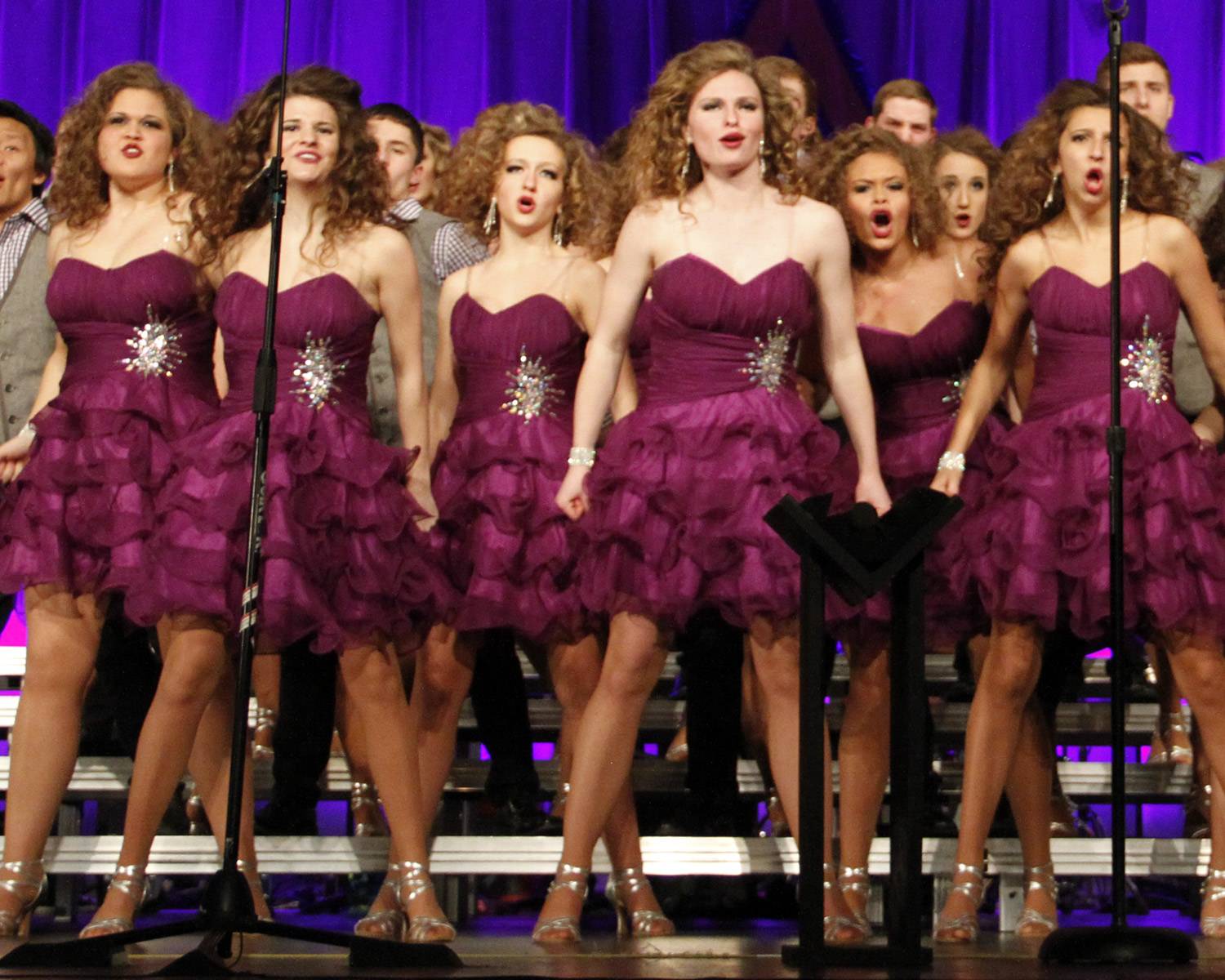
Planning
First and foremost, when ordering costumes, plan ahead and move quickly. While many show choir companies offer fast shipping, it’s best to plan ahead to avoid back order issues. On ready-to-wear dresses or suits, pick several styles as possible options. As availability of your favorite style can change daily, it’s best to have more than one dress or suit that you know will work for your group. Once you have decided, place your order ASAP to avoid the disappointment of a sold out style.
Style
When picking your style, think about your set and your group. How will the style you pick work for this year’s group and possibly the groups to follow? For the women, look for the most flattering style. While it’s not possible to make all of your students happy, it can be a good idea to have your girl captain try on and dance in the dress. For the men, try to find a style that lets them feel important and makes them stand out like the women. Grey suits have been very popular for a few years, but don’t be afraid to make a statement with color.
Sizing
Sizing and measuring your students can be one of the most stressful parts of the ordering process. For starters, have a person measure that has some experience in measuring and sizing students. For men and women, always measure at the largest section of the body. In womenswear, this is particularly important on the hips if you are ordering a fitted dress.
Another key point is the correct undergarments. Ask your girls to wear the bra they will wear with their costumes while being measured. In my experience, measuring often occurs during a dance rehearsal where girls are often in sports bras, giving a very different measurement than a strapless or a bustier. If girls haven’t purchased their correct bra yet, it’s better for them to wear a regular bra that is similar to what they will buy.
All costume sizes assigned to students must be based on the biggest measurement. This is the same for men and women. If a girl has a size S chest but an L waist, you will need to order the L and take in the bust. A helpful point is that many skirts are circle or a full skirt so the hip measurement is less important. While men’s suits are sold as a set, you switch around within your group to get the closest possible fit.
Undergarments
The proper undergarments can make a big difference on how a dress fits. Encourage your girls to find and wear the proper undergarments that fit best with your costumes. Not all bustiers and bras fit the same, so each girl might need to try on various styles to find the best fit that works with the costume.
Bustiers are always my preferred undergarment as they support from the waist up and help give dresses a smoother overall look. Other undergarments such as Spanx or slimming shapers can be worn; however, it is very important to make sure nothing is visible from stage during dancing.
Shipping
Shipping costs can add anywhere from 6-12% to your order. When you are shopping for which company to buy from, look for shipping discounts and take advantage. Additionally, planning in advance is helpful here as you will save money on shipping ground.
Alterations
On all costumes, EXPECT ALTERATIONS. Very few people are lucky enough to be a perfect size 4, 6, 8 etc. Almost all dresses and suits will need some sort of altering. Hopefully the majority of your alterations will be minor such as shortening straps or hemming pants. However, you will most likely have a handful of students who will need more significant alterations.
Recruit any and all parents who have sewing skills in order to keep costs down. If you don’t have this resource, some show choir costume companies offer alterations on costumes before they are shipped out. For instance, Dornink offers a variety of alterations such as shortening straps, adding length to dresses and increasing or decreasing the size of a costume. This can be a great resource if you have few seamstresses or tailors in your arsenal of volunteers.
When trying to calculate possible alterations costs, be sure to consider how certain fabrics or styles might be trickier to alter. Beading is the most difficult and costly fabric to alter. Good alternatives that are less difficult and costly to alter are sequins and any glued on sequin.
Finally, talk to your costume company and ask as many questions as you have. They are there to help you understand as much about your costumes as you can before you order.











